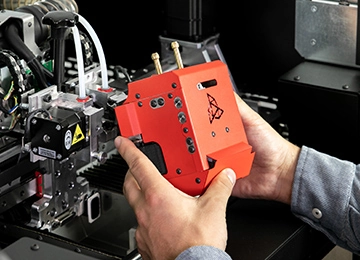Manual
Software
Useful terms
3DGENCE SLICER
-
Skirt
Additional material printed around the model at a distance of a few millimeters from it at the very beginning of the print. The Skirt does not make an integral part of a model. Its function is to initialize and stabilize the flow of plastics through the hotend. By observing the way the printer lays skirt on the table we can assess if the table is correctly leveled and if the print adheres to it.
-
Slicing
The process aimed at generating paths and instructions for the printer (machine code, G-code) from a 3D model. At the level of slicer we can choose such settings as layer thickness, print speed, filling density, thickness of solid walls or nozzle and printing bed temperature. In addition, it is also possible to select the use and the density of supports and one of the few ways of improving the print adhesion to the bed (e.g. raft or brim). The 3DGence printers use the 3DGence Slicer program with predefined settings from various materials and resolutions. The final effect of slicer operation results in obtaining a machine code representing a specific 3D model in the form of G-code (g-code, *.GCODE) that is subject to interpretation by the printer electronics.
-
STL
Surface Tessellation Language – one of the basic formats of 3D files. It describes only the layout of triangle apexes that make up the solid and the orientation of normal for those triangles. It does not include any information on color, materials, textures or other graphical elements being part of other more extensive 3D file formats. Originally implemented by 3D Systems company for the use of stereographic printing.
-
Support
This is a support added by a model designer or a slicing software (3DGence Slicer) in order to form a supporting frame for the parts of the model suspended in the air. A correctly made support is not a part of a model and can be easily removed once the printing is completed. 3DGence Slicer automatically generates supports. The support generated by 3DGence Slicer consists of two parts – a loose laid material and the so-called dense support layers, directly supporting the model itself.
-
Warping
This is a negative phenomenon that occurs in FFF prints affecting mainly the materials with a high thermal shrinkage. It consists in tearing the most external print elements, most commonly the corners, from the printing bed. It is prevented by using a heated table and working chamber of the device.

